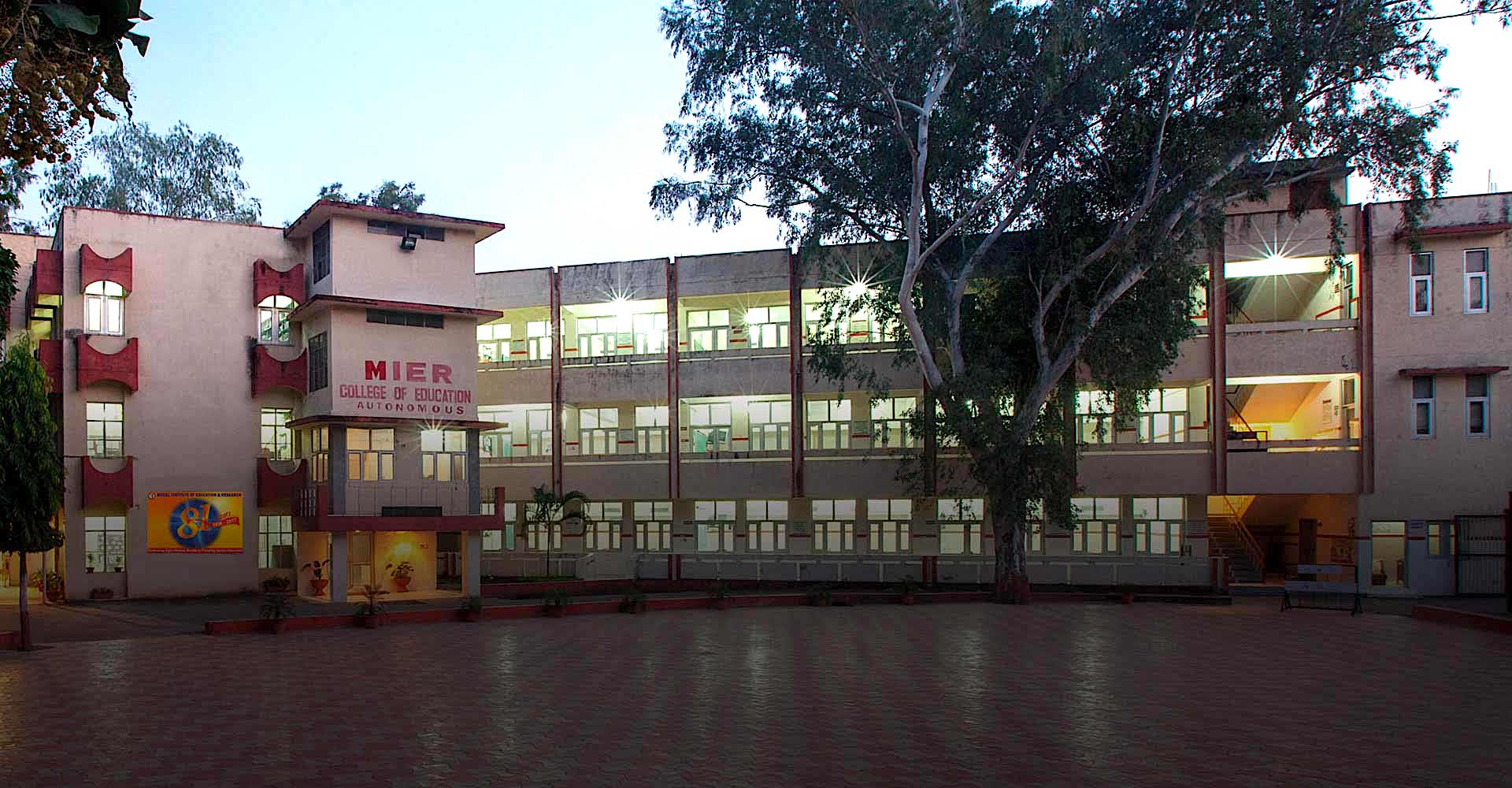Informing Barriers to Classroom Practices with an Assessment Tool: Study on Private Schools Serving Children from Informal Settlements
DOI:
https://doi.org/10.52634/mier/2023/v13/i1/2333Keywords:
Classroom practices, Barriers, Private, School, Children, Informal settlementAbstract
Classroom practices form an array of integrated teaching and learning strategies conducive to the real world. Lesser is known about the classroom practices experiences among the students belonging to the informal settlements in private schools of India. The paper presents a brief insight into barriers to classroom practices with a self-prepared assessment tool, namely Classroom Practice Position (CPP). It can aid teachers in prioritising practices for balancing participation in the classroom. The measure will help to determine the placement of classroom routine activities. The paper highlights the data from the perspectives of 58 students in Rourkela (a city in the State of Odisha, India) through a sequential exploratory method and data analysis with SPSS v.20. The CPP tool indicates that peer support from the well-performing students helps in mitigating stereotypes, in completion of classwork, identity and familiarity with teachers.
Downloads
Metrics
Downloads
Published
How to Cite
Issue
Section
License
Copyright (c) 2023 Pallavi Kanungo

This work is licensed under a Creative Commons Attribution 4.0 International License.
The articles published in the MIER Journal of Educational Studies, Trends and Practics (MJESTP) are distributed under the terms of the Creative Commons Attribution License (CC BY 4.0), which permits unrestricted use, distribution, and reproduction in any medium, provided the original author and source are credited.
- Copyright on any open access article in the MIER Journal of Educational Studies, Trends and Practics (MJESTP) published by Model Institute of Education and Research (MIER) is retained by the author(s).
- Author(s) grant MIER a license to publish the article and identify himself/herself/themselves as the original publisher.
- Authors also grant any third party the right to use the article freely as long as its integrity is maintained and its original authors, citation details and publisher are identified.
- The Creative Commons Attribution License 4.0 formalizes these and other terms and conditions of publishing articles.
References
Adu, P. (2019). A step-by-step guide to qualitative data coding (1st ed). Routledge.
Banerjee, M. (2014). Elementary education of the urban poor. Economic and Political Weekly, 49(37), 33. https://www.epw.in/journal/2014/37/commentary/elementary-education-urban-poor.html
Banerji, R. (2000). Poverty and primary schooling: Field studies from Mumbai and Delhi. Economic and Political Weekly, 35(10), 795–802. https://www.epw.in/journal/2000/10/special-articles/poverty-and- primary-schooling.html
Bennell, P. (2022). Private schooling in sub-Saharan Africa: An egalitarian alternative? International Journal of Educational Development, 88, 102533. https://doi.org/10.1016/j.ijedudev.2021.102533
Borgmeier, C., Loman, S. L., & Hara, M. (2016). Teacher self-assessment of evidence-based classroom practices: Preliminary findings across primary, intermediate and secondary level teachers. Teacher Development, 20(1), 40–56. https://doi.org/10.1080/13664530.2015.1105863
Connell, R. (1994). Poverty and education. Harvard Educational Review, 64(2), 125–150. https://doi.org/10.17763/haer.64.2.m14947g30k1x5781
Creswell, J. W., & Clark, V. P. L. (2017). Designing and conducting mixed methods research (3rd ed). SAGE Publications.
Emmer, E. T., & Gerwels, M. C. (2006). Classroom management in middle and high school classrooms. In C. M. Evertson & C. S. Weinstein (Eds.), Handbook of classroom management: Research, practice, and contemporary issues (pp. 407–437). Lawrence Erlbaum Associates Publishers.
Gurl, T. J. (2019). Classroom practices of cooperating teachers and their relationship to collaboration quality and time: Perceptions of student teachers. Teaching Education, 30(2), 177–199. https://doi.org/10.1080/10476210.2018.1457635
Hayes, D., Johnston, K., & King, A. (2009). Creating enabling classroom practices in high poverty contexts: The disruptive possibilities of looking in classrooms. Pedagogy, Culture and Society, 17(3), 251–264. https://doi.org/10.1080/14681360903194293
Hidlebaugh, J. (1973). A model for developing a teacher performance evaluation system: A multiple appraiser approach (Unpublished Doctoral Thesis). Iowa State University. https://core.ac.uk/download/pdf/38915873.pdf
Khasnabis, R., & Chatterjee, T. (2007). Enrolling and retaining slum children in formal schools: A field survey in eastern slums of Kolkata. Economic and Political Weekly, 2091–2098. https://www.epw.in/journal/2007/22/special-articles/enrolling-and-retaining-slum-children-formal-schools.html
Knapp, M. S., Shields, P. M., & Turnbull, B. J. (1995). Academic challenge in high-poverty classrooms. Phi Delta Kappan, 76(10), 770. https://eric.ed.gov/?id=EJ505021
Kumar, K. K., & Shukla, T. (2016). Education outcomes and Child's work: A case study of children in slum. Educational Quest- an International Journal of Education and Applied Social Sciences, 7(2), 117–124. https://doi.org/10.5958/2230-7311.2016.00028.3
Lin, X., Schwartz, D. L., & Hatano, G. (2005). Toward teachers' adaptive metacognition. Educational Psychologist, 40(4), 245–255. https://doi.org/10.1207/s15326985ep4004_6
Moore, T., & McArthur, M. (2011). Good for kids: Children who have been homeless talk about school. Australian Journal of Education, 55(2), 147–160. https://doi.org/10.1177/000494411105500205
Mulholland, M., & O'Connor, U. (2016). Collaborative classroom practice for inclusion: Perspectives of classroom teachers and learning support/resource teachers. International Journal of Inclusive Education, 20(10), 1070-1083. https://doi.org/10.1080/13603116.2016.1145266
Perry, K. E., & Weinstein, R. S. (1998). The social context of early schooling and children's school adjustment. Educational Psychologist, 33(4), 177–194. https://doi.org/10.1207/s15326985ep3304_3
Petersson, U. (2012). Kenyan teachers perspectives on working with students from slum areas in Nairobi: A qualitative study (Unpublished Master's Thesis). Linnaeus University. http://www.diva-portal.org/smash/get/diva2:602629/FULLTEXT01.pdf
Rannaware, A., Shaikh, U., Gaidhane, A., Choudhari, S. G., & Zilate, S. (2022). Challenges and barriers for accessing online education amongst school children in an urban slum area of Pune, India. Cureus, 14(9), e29419. https://doi.org/10.7759/cureus.29419
Reinke, W. M., & Herman, K. C. (2016). Bridging the gap: Using the brief student–teacher classroom interaction observation to inform classroom practices. Assessment for Effective Intervention, 42(1), 43–45. https://doi.org/10.1177/1534508416667309
Richards, H. V., Brown, A. F., & Forde, T. B. (2007). Addressing diversity in schools: Culturally responsive pedagogy. Teaching Exceptional Children, 39(3), 64–68. https://doi.org/10.1177/004005990703900310
Singh, A. K. (2015). Education of urban children. In the report forgotten voices: The world of urban children in India, PwC, India, 1–188. https://www.pwc.in/assets/pdfs/publications/urban-child/urban-child-india-report.pdf
Tsimpli, I. M., Vogelzang, M., Balasubramanian, A., Marinis, T., Alladi, S., Reddy, A., & Panda, M. (2020). Linguistic diversity, multilingualism, and cognitive skills: A study of disadvantaged children in India. Languages, 5(1), 10. https://doi.org/10.3390/languages5010010
Tsujita, Y. (2013). Factors that prevent children from gaining access to schooling: A study of Delhi slum households. International Journal of Educational Development, 33(4), 348–357. https://doi.org/10.1016/j.ijedudev.2012.08.001
U-DISE. (2016–17). Odisha-elementary education report card, 2016–17. Elementary Education in India: Where do we stand? http://udise.in/Downloads/Elementary-STRC-2016-17/21.pdf
United Nations. (2015). The Millennium Development Goals report. United Nations. https://www.un.org/millenniumgoals/2015_MDG_Report/pdf/MDG%202015%20rev%20(July%201).pdf.
Weiner, M. F. (2016). Racialized classroom practices in a diverse Amsterdam primary school: The silencing, disparagement, and discipline of students of colour. Race Ethnicity and Education, 19(6), 1351–1367. https://doi.org/10.1080/13613324.2016.1195352
Woodcock, S., Sharma, U., Subban, P., & Hitches, E. (2022). Teacher self-efficacy and inclusive education practices: Rethinking teachers' engagement with inclusive practices. Teaching and Teacher Education, 117, 103802. https://doi.org/10.1016/j.tate.2022.103802
Yew Tee, M., Samuel, M., Mohd Nor, N. B., V Sathasivam, R. A., & Hutkemri. (2018). Classroom Practice and the Quality of Teaching: Where a Nation is Going? Journal of International and Comparative Education, 7(1), 17–33. https://doi.org/10.14425/jice.2018.7.1.17





















